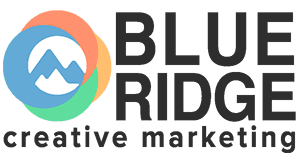What Is Content Marketing? A Guide for Small Business Growth
At Blue Ridge Creative Marketing, we talk a lot about showing up intentionally – online, in your community, and in front of the people who matter most to your business.
In today’s world, content marketing is important because your audience is constantly scrolling, searching, comparing, and evaluating options long before they ever reach out to a business. That means traditional advertising alone won’t cut it anymore.
Brands that win today are the brands that educate, inspire, and add value long before the sale. That’s exactly where content marketing comes in.
So what exactly is content marketing?
Content marketing is the strategic creation and distribution of valuable, relevant content designed to attract, educate, and engage your ideal customers… and ultimately drive profitable action.
It’s not about pushing quick sales. It’s about building trust over time through usefulness.
Instead of interrupting people with ads they didn’t ask for, content marketing invites them in with something they actually want or are already searching out: answers, clarity, inspiration, solutions, and insight.
At Blue Ridge Creative Marketing, we build content experiences that do three things:
-
Position your brand as the trusted expert,
-
Guide customers through their journey, and
-
Drive results that grow your business over time.
Why content marketing matters more than ever
1. It Builds Authority & Authentic Trust
People don’t just want the best option, they want the most trustworthy one.
Quality content shows your audience that you understand their challenges and have the solutions they need. Whether through blogs, social media, videos, or email campaigns, we help brands create content that feels real, helpful, and human.
2. It Fuels Your SEO & Improves Organic Reach
Google rewards brands that publish consistent, high-value content.
As part of our website content and SEO services, we develop keyword-driven articles, landing pages, and resources that help you rank for the topics your ideal customers are actively searching for. More visibility means more traffic and more opportunities to gain new business.
3. It Supports Every Stage of Your Customer Journey
Your audience’s needs change as they move from awareness to decision. Content helps guide them at every step:
-
Blogs & educational posts spark initial interest.
-
Social media content keeps your brand top of mind.
-
Case studies, testimonials, and videos support decision-making.
-
Email newsletters nurture long-term relationships.
Our team ensures your message flows seamlessly across all channels so your audience experiences a consistent, compelling brand story.
4. It Delivers Long-Term ROI
Unlike paid ads, which stop working the second you stop spending, great content continues driving traffic and leads long after it’s published. It’s one of the most cost-effective marketing investments a business can make.

What Content Marketing Includes (and What We Create for Clients)
At Blue Ridge Creative Marketing, content marketing touches nearly every part of your brand’s digital presence. We craft:
-
Strategic blog content that strengthens SEO
-
Social media content & planning (Instagram, Facebook, TikTok, LinkedIn)
-
Email campaigns & newsletters
-
Brand messaging and storytelling
-
Website and landing page content optimized for conversion
-
Short-form video scripts
-
Marketing collateral like brochures, one-sheets, and guides
Plus, because we’re a full-service creative agency, your content benefits from our design, branding, and web expertise ensuring everything is visually aligned, on-brand, and crafted to make an impact.
The Bottom Line
Content marketing isn’t just a task, it’s a whole damn ecosystem. It fuels your website, strengthens your brand, empowers your social presence, and builds valuable relationships with your customers before they ever walk through your door or submit a contact form.
At Blue Ridge, we help businesses turn their story, expertise, and personality into content that actually moves people and the needle for your business.
Schedule a discovery call today to see how our content marketing services can help your brand stand out, build trust, and over time, increase sales.
How to Increase Brewery Sales: 3 Things You Need to Do Today
Let's face it... it's tough to increase brewery sales. You spent time, money, and passion building your dream taproom. The beer is cold, the space is chef’s kiss, and it should be packed with people. Right? But it’s not.
You might be wondering: Why aren’t people lined up outside? Why isn’t my brewery or taproom the go-to spot in town yet?
The truth is, brewing great beer and creating an inviting space is only half the equation. The other half? Making sure people actually know you exist, feel excited to visit, and remember to come back.
If you're a brewery owner or manager wondering how to increase brewery sales, you're not alone. The craft beer scene is more competitive than ever, and being good isn’t good enough. You need visibility. You need foot traffic. And you need to show up where your customers already are.
Here are three things you can do today to start driving more sales and getting the attention your brewery deserves.
#1. Get Intentional on Social Media
You're probably already posting on Instagram and Facebook. Maybe you’ve shared a few photos of your latest hazy IPA or last weekend’s band. That’s a good start. But are you posting with a plan?
Most breweries treat social media like an afterthought. But social is where people decide if your taproom is worth checking out. It’s your first impression, your digital storefront, and your daily reminder to the community that you’re active, fun, and worth visiting.
Here's how to level up:
- Post consistently. Aim for 5-7 times per week. Show off your beer, food, staff, events, and anything that makes your space unique.
- Use Reels and trending audio. Instagram is prioritizing video. Even a 10-second pour can bring in hundreds of new views.
- Boost your best posts. Spending $10–$25 to target local beer lovers can drastically increase visibility.
- Run giveaways quarterly to grow your following and create buzz. In North Carolina, you can’t give away alcohol, but gift cards, merch, and swag bags work great.
Example: Check out a giveaway we ran for Seven Mile Post in Wilmington, NC. It led to an increase in followers, almost 100 likes and several hundred comments.
Also: always tag your location, use local hashtags, and post to your Stories. That extra effort keeps you top of mind.
#2. Optimize Your Google Business Profile
When people search for “breweries near me” or “live music Wilmington,” your Google Business listing is often the first thing they see. If it's outdated or poorly managed, you're losing customers before they even walk in (the opposite of increasing brewery sales).
Take five minutes and check:
- Are your hours accurate? Especially around holidays or events. Few things turn customers off faster than showing up to a locked door.
- Are you responding to reviews? Thank the positive ones, address the negatives professionally. People read these.
- Are you posting weekly updates? New beer releases, trivia nights, or food trucks—these can all be posted directly to your profile to show you're active - and help increase brewery sales.
An up-to-date and engaging profile improves local SEO and helps your brewery stand out in search results, leading to an increase in brewery sales over time.
#3. Keep Your Website Fresh and Functional
Your website doesn’t need to be flashy, but it does need to work. People want to know what’s on tap, when you’re open, and what’s happening this weekend.
Make sure your site includes:
A current beer list or taproom menu
- An updated events calendar
- Specials (like $5 pint nights, taco Tuesdays, etc.)
- Clear hours, location, and contact info
- Bonus: Add a newsletter sign-up so you can stay in touch with your biggest fans.
Think of your website like your digital taproom. If it’s outdated or hard to navigate, people will leave—and maybe not come back.
Bonus: Collaborate and Cross-Promote to Increase Brewery Sales
Want to grow without paying for ads? Partner up.
Try:
- Co-hosting events with musicians, artists, food vendors, etc.
Example: Our client, Tides Taproom, partnered with Wilmington’s permanent jewelry vendor Tiny Welds to host Wednesday night trivia, increasing visibility and engagement for both businesses.
- Creative collaborations with local businesses
Recently, local radio station The Penguin 98.3 celebrated its birthday with a special beer collaboration called A Different Kind of Bird, created by Wilmington Brewing Company.
The radio station’s slogan-turned-beer gained traction, increasing visibility for both brands.
- Inviting local influencers or creators in for a pint in exchange for a shoutout
Collaboration with Wilmington, NC influencers like CheckWhatsGood and LaurensSuitcase puts you in front of new audiences and helps you stay connected to the local scene.
TLDR? Here’s Where to Put Your Effort for Boosting Brewery Sales
If you’ve been asking yourself why your beautiful taproom isn’t packed every night, start with what you can control:
- Show up consistently on social
- Keep your Google profile and website fresh
- Create real excitement through updates, partnerships, and giveaways
At Blue Ridge Creative Marketing, we help breweries like yours get noticed, stay relevant, and grow sales—without gimmicks or overpriced fluff.
Need support with social media, local ads, or marketing strategy? We’re here when you’re ready.
How to Market Adult Toys Without Getting Banned: Creative Strategies for Taboo Brands
You can’t come right out and say it — not on Instagram, not on Meta ads, and definitely not on TikTok. That’s why adult toy marketing is an art form in euphemism. You have to beat around the bush (yes, we said it) to spark curiosity, get the point across, and stay on the right side of platform policies
At Blue Ridge Creative Marketing, we specialize in marketing that pushes the envelope without pushing it off the table. Whether we’re promoting THC-infused seltzers or NSFW giveaways, we help brands say what they mean — without ever saying it directly.
Let’s talk about how we marketed adult toys for one of our bar clients without getting flagged — and how we can help you do the same.
Case Study: How We Marketed Adult Toys for a Music Bingo Event
When Seven Mile Post, a bar and event venue in Wilmington, NC, teamed up with Priscilla McCall’s, a local adult toy store, they wanted a way to promote a spicy twist on their Ladies’ Night Music Bingo.
But how do you advertise a sex toy giveaway on Instagram without getting reported or removed?
We used a photo of sexy cuffed hands to create intrigue, then wrote a caption that was suggestive, but clean:
Our spiciest take on Ladies’ Night Music Bingo yet… completely sponsored by @priscillamccalls. We’d share the gifts, but they’re #NSFW and we want them to be a surprise. Come play with us at Seven Mile Post at 7PM on Monday. Oh, and don’t forget to indulge in our 1/2 off bottles of wine to loosen things up.
No explicit product photos. No banned words. Just cheeky, elevated language that draws attention without crossing a line. That post was one of their highest-performing event promos of the month — and not a single flag or takedown in sight.
What Is Adult Toy Marketing?
Adult toy marketing refers to the promotion of products related to sexual wellness — including vibrators, lubricants, accessories, and intimate apparel. Because this market deals with sensitive (and highly regulated) content, marketers have to be careful about how products are displayed, described, and distributed — especially on platforms like Instagram, Facebook, TikTok, and Google Ads.
Our Favorite Tactics for Marketing Taboo Products
Want to stay sexy and safe? Here are our top tips:
1. Imply, don’t show.
Instead of showing a toy in action (a major no-no), suggest its use through imagery and copy. Think: nightstand aesthetics, steamy shadows, or even fruit cut just so. Dame Products is a master at this — using elegant, minimal photography to keep things tasteful.
2. Use clever metaphors.
Say it with a 🍌. Or a 🐱. Or even a punny caption like “Come again?” Using emojis and double entendres lets your message get through without being censored. We love how Lovehoney did this with a video on cleaning your 🍌, keeping it light, funny, and informative
3. Educate and Entertain
Sexual wellness is still widely misunderstood — and that creates a huge opportunity for adult toy brands to educate in a way that’s both informative and approachable. One standout example is Lovehoney, which has built a following of over 335,000 on Instagram by focusing on content that informs, empowers, and entertains — all while rarely showing or explicitly mentioning their products.
Their secret? Talking openly about topics others shy away from, and doing so with creativity and care. Instead of pushing products, they share valuable insights, conversation starters, and cheeky-but-smart content that resonates with audiences and plays nicely with platform guidelines. The result is trust, brand loyalty, and community — without controversy.

Who Do We Help?
If your business lives in a gray area — legal, loved, but tricky to promote — you’re our kind of client. We specialize in:
- Adult toy shops & sexual wellness brands
- Cannabis & THC beverages
- Bars, breweries & nightlife venues
- Plastic surgeons & med spas
- Astrology, tarot & spiritual wellness
- Mental health & ketamine clinics
You deserve a marketing team that gets how to walk that fine line — and isn’t afraid to push creative limits while keeping your brand safe.
Ready to Tease the Algorithm?
At Blue Ridge Creative Marketing, we’ve proven time and again that we can sell anything — even when the product can’t speak for itself.
If you're ready to show off your brand in a bold, strategic way — without getting shadowbanned — let’s talk.
Because taboo doesn’t scare us. In fact, we thrive in it.
Let’s chat when you’re ready: hello@weareblueridge.com
Why Taboo Marketing Might Just Be Your Secret Weapon
Let’s talk about the elephant in the room – or rather, all those industries that make people shift uncomfortably in their seats when they come up at dinner parties. You know the ones: cannabis dispensaries, adult toy shops, funeral homes, addiction recovery centers, and yes, even those brands selling products for “down there” health issues.
Welcome to the wild world of taboo marketing, where the rulebook gets thrown out the window and creativity becomes your best friend.
What Exactly Is Taboo Marketing?
Taboo marketing is the rebellious cousin of traditional advertising.
We’re talking about promoting products and services that make people blush, whisper, or change the subject entirely. These aren’t industries that can just toss money at a Facebook ad and wait for results—trust us, they’ve tried.
From advertising bans to platform restrictions to that one aunt who still pretends not to know what you do—these brands face a unique mix of challenges. But here’s the kicker:
What seems like a roadblock? Might actually be your brand’s biggest superpower.
Why Taboo Marketing Is Actually Pretty Brilliant
- You Get to Be the Real Deal
While other brands are busy crafting perfect, sanitized messages, taboo marketers get to be refreshingly honest. When you’re selling something people actually need but are embarrassed to talk about, dropping the corporate speak and getting real creates instant connection. Your customers aren’t looking for another polished sales pitch—they want someone who gets it and isn’t weird about it. - Less Competition, More Opportunity
Here’s a fun fact: most marketers run screaming from taboo industries faster than people leave a bad first date. This mass exodus creates a golden opportunity for those brave enough to stay. With fewer players in the game, you’ve got more room to establish your brand, experiment with messaging, and build genuine relationships with your audience. - Customer Loyalty That Would Make Disney Jealous
When someone finds a brand that treats them with respect in a space where they’ve felt judged or ignored, magic happens. These customers don’t just buy—they become evangelists. They stick around longer, spend more, and recommend you to their friends (albeit sometimes in hushed tones over coffee). - Innovation Born from Necessity
Can’t advertise on Google? Time to get creative with content marketing. Banned from Instagram? Hello, email newsletters and community building. These restrictions force taboo marketers to think outside the box, often pioneering strategies that mainstream marketers later steal—I mean, “adopt.”
The Playbook for Taboo Marketing Success
- Become the Wikipedia of Your Niche
Education is your golden ticket. People are curious about taboo topics but don’t know where to get reliable information. Become their go-to source. Create content that answers the questions people are too embarrassed to ask their friends. You’ll build trust while positioning yourself as the expert who’s not afraid to tackle the tough topics. - Build Your Tribe
Create spaces where your customers can connect without judgment. Online communities, forums, or even good old-fashioned email lists can become powerful assets. When people feel like they belong somewhere, they’re more likely to stick around and bring friends to the party. - Master the Art of Channel Surfing
Since traditional advertising channels often give taboo industries the cold shoulder, successful brands become masters of diversification. Podcasts, influencer partnerships, content marketing, direct mail, carrier pigeons—okay, maybe not that last one, but you get the idea. The key is being everywhere your audience hangs out, even if it’s not where everyone else is advertising.
Playing Nice While Breaking Rules
Here’s the thing about taboo marketing: with great power comes great responsibility (thanks, Spider-Man). The goal isn’t to shock people for shock’s sake or push boundaries just because you can. It’s about creating genuine connections while gradually making society a little more comfortable with important conversations.
This means staying compliant with regulations, respecting community standards, and never exploiting vulnerable people. Think of yourself as a friendly rebel, not a chaos agent.
The Future Looks Interestingly Taboo
As society evolves and platforms adapt (slowly but surely), taboo marketing continues to push boundaries and create new possibilities. The brands mastering these approaches today aren’t just surviving, they’re thriving and paving the way for more open, honest marketing across all industries.
Taboo marketing proves that sometimes the best strategy is the one nobody else wants to try. It’s messier, more challenging, and definitely more interesting than traditional marketing. But for those willing to embrace the chaos, the rewards go way beyond typical marketing metrics to include genuine impact and the kind of customer loyalty that marketing textbooks dream about.
So, ready to join the rebellious side of marketing? The water’s warm, and the competition’s practically nonexistent. At Blue Ridge Creative Marketing, we specialize thinking outside the box to help get your brand noticed, no matter if you’re in a taboo industry or not. Marketing is full of bad rules, and conventions… and we think bad rules are made to be broken. Let’s chat about your next marketing or advertising project.
4 of the Best Hosting Providers with Customer Service: Approved By Blue Ridge
We’re all about empowering business owners to take control of their online presence. But even if you’re the roll-up-your-sleeves type who likes to manage your own website, having a solid backup team in your corner is key. That’s where great hosting providers come in – ones that offer reliable uptime, intuitive dashboards, and (most importantly) excellent customer service when you need it most.
If you’re looking for a hosting provider that gives you the tools to be hands-on without feeling stranded especially in a pinch, here are our top picks for the best hosting providers with customer support.
1. Bluehost – Great for WordPress Users & Growing Sites
Why we recommend it:
Bluehost is one of the most beginner-friendly hosting providers out there, especially for WordPress users. Their dashboard is easy to navigate, making it simple to manage your site, email accounts, and backups on your own.
But what really makes Bluehost stand out is their 24/7 customer support — via live chat or phone — with actual humans who can walk you through even the trickiest issues.
Best for:
✔ WordPress-based websites
✔ DIY site managers who still want expert help when needed
✔ Small to mid-sized businesses looking to grow
2. GoDaddy – Ideal for All-in-One Web Solutions
Why we recommend it:
GoDaddy is more than just a hosting provider — it’s practically a one-stop shop for everything from domains to email marketing to website builders. If you’re someone who wants to manage a lot of your online operations in one place, GoDaddy is a strong contender.
Their customer service is available 24/7, and they offer guided support options like “Do-It-With-Me” services, which are perfect if you need help setting something up without handing over full control.
Best for:
✔ Business owners juggling multiple digital assets
✔ Those who prefer an all-in-one platform
✔ People who like having the option to call in reinforcements
3. Hostinger – Budget-Friendly with Surprisingly Strong Support
Why we recommend it:
Hostinger is perfect for those just getting started or working with a lean budget. It offers a sleek control panel, one-click WordPress installs, and solid performance — all at a very competitive price. But don’t let the low cost fool you — their 24/7 live chat support is responsive and helpful, even for trickier technical issues.
Best for:
✔ Beginners and solopreneurs
✔ Businesses on a budget
✔ DIYers who still want support when they need it
4. WP Engine – Premium Hosting for WordPress Power Users
Why we recommend it:
WP Engine is built exclusively for WordPress, so if you’re all-in on WordPress and want a high-performing, ultra-secure, fully managed environment, this is your best bet. It’s more expensive than shared hosting, but you get what you pay for — including top-tier 24/7 support, staging environments, daily backups, and lightning-fast load times.
Best for:
✔ Agencies, creators, and high-traffic WordPress sites
✔ Business owners who want zero downtime
✔ Users who want to focus on content while WP Engine handles the tech
Final Thoughts
You don’t have to be a tech genius to manage your own website — but you do need a hosting provider that has your back. Whether you’re tweaking your design, setting up email accounts, or fixing a plugin that crashed your homepage at midnight, having a real support team in place makes all the difference.
At Blue Ridge Creative Marketing, we help our clients build beautiful, functional websites — and we always recommend starting with the right foundation. Choosing a hosting provider that offers both independence and support is one of the smartest moves you can make.
Need help setting up your site or choosing the best plan? Let’s chat. We’re here to make sure you’re never flying solo online. Email us at hello@weareblueridge.com.
The Secret to Local SEO Success? Your Google Business Profile
If you’re a local business trying to stand out in search, local SEO is non-negotiable—and it all begins with your Google Business Profile.
Think of your listing as the digital front door to your brand. When someone searches for services “near me,” Google prioritizes businesses with strong SEO signals and business profiles—like consistent updates, positive reviews, and complete business info. If you’re not showing up there, you’re invisible.
At Blue Ridge, we help businesses harness the power of localized SEO by optimizing their Google Business listings for real-world results.
What Is Local SEO, Really?
Local SEO (search engine optimization) focuses on increasing your visibility in local search results on Google. It’s how your business appears when someone nearby types:
-
“barber near me”
-
“best psychiatrist in Wilmington NC”
-
“pet groomer open now”
Your Google Business Profile is central to this strategy. When optimized correctly, it boosts your chances of being seen by people who are actively searching for exactly what you offer. Localized SEO also helps ensure that you show up in Google Maps and local pack results, where your potential customers are most likely to engage.
What Goes Into a Strong Google Business Profile?
Since February 2025, we’ve been managing the Google listings for Capeside Psychiatry, a North Carolina-based mental health provider. Their success shows how powerful localized SEO can be when done right.
Here’s what we do each week for them:
-
Respond to all patient reviews to build trust and improve relevance
-
Regularly update FAQs to reflect common search queries
-
Upload high-quality images that showcase their spaces and services
-
Share fresh updates from their social media to keep content relevant
Results After 90 Days of Google Business Optimization Focus
Jacksonville, NC Location
-
Primary Actions (calls, directions, website clicks):
📈 380 (Oct–Dec 2024) ➝ 525 (Feb–Apr 2025) — 38% increase -
Profile Views:
👀 1,200 ➝ 1,900 — 58% increase
Wilmington, NC Location
-
Primary Actions (calls, directions, website clicks):
📈 1,200 ➝ 1,400 — 17% increase -
Profile Views:
👀 3,060 ➝ 5,000 — 63% increase
Those numbers represent more than metrics—they show real growth in visibility, awareness, and engagement thanks to localized SEO done right. Read our case study to see more detail on these findings.
Which Businesses Benefit the Most from SEO & Strong Google Business profiles?
If people search online before visiting or calling your business, you need local SEO. Period. Here are just a few industries that can’t afford to ignore it:
- Gyms and Fitness Studios
- Hair Salons and Barber Shops
- Spas and Wellness Clinics
- Medical and Mental Health Practices
- Bars and Restaurants
- Pet Groomers and Animal Hospitals
- Auto Repair Shops
- Cleaning Services and Home Contractors
- Daycares and Learning Centers
- Retail Stores and Boutiques
- Chiropractors and Physical Therapists
- Tattoo and Piercing Studios
Whether you rely on appointments, foot traffic, or phone calls—Google is your biggest referral source.
Stand Out From The Competition
All this isn’t just about showing up—it’s about standing out. A strong Google Business Profile builds trust with potential customers, drives website clicks, and puts your business on the map—literally.
Want to grow your business without guessing your way through local SEO?
Limited-Time Offer: Save $600 This Year
We’re offering $50 off per month when you sign a 12-month Google Business Listing Optimization contract—with easy month-to-month payments. That’s expert-level Google Business profile support for less than the cost of one new customer.
At Blue Ridge, we’re not your average agency—we’re #SurprisinglyDifferent. Let’s make sure your business gets found first.








